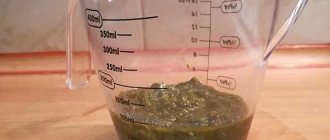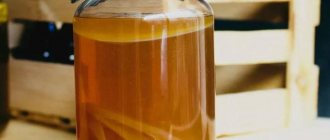Wine Fermented In A Bottle Can You Drink?
Art. Novopokrovskaya Novopokrovsky district
village Novopokrovskaya Krasnodar region
Alcoholic beverages, Wine care, Fighting secondary fermentation
- Navigation:
- home
- Home Economics
- Alcoholic drinks
making homemade wine
Wine care
Fighting secondary fermentation. There are cases when wine stored in cellars, even if already matured, enters a period of repeated, even sometimes active, fermentation. Such fermentation can also occur during long-distance transportation of wine. The repeated occurrence of fermentation is always dangerous and harmful. Measures must be taken to immediately stop re-fermentation. One of the best and most harmless ways to stop re-fermentation is to keep the wine at lower temperatures. In such cases, it is advisable to place the fermented wine in a room with zero temperature. At this temperature, the wine should be aged from two weeks to one month, depending on the condition of the wine. The most perfect and harmless way to stop secondary fermentation is to use salicylic acid. To stop fermentation, two grams of salicylic acid per bucket of wine is enough. This does not change the taste and aroma of the wine. Salicylic acid must be added to wine only in dissolved form, since salicylic acid crystals in cold liquid are almost insoluble or dissolve very slowly.
Fighting wine diseases. Wines, especially young ones, are susceptible to a wide variety of very dangerous diseases. To prevent diseases of wine during its production and storage, sanitation and hygiene should be strictly observed, especially since diseases of wine arise from violation of these rules. It may be enough to keep young wine for a long time in a vessel that is not filled to the top and in full contact with air, or to leave pulp on the surface of the fermenting wort so that the wine becomes infected with mold, acetic acid and other diseases. A dirty, insufficiently washed, not steamed or not smoked with sulfur barrel intended for storing wine is a source of all kinds of diseases. Even a new, clean barrel, if it is not sufficiently soaked and evaporated, after some time imparts a very unpleasant and sensitive bitterness to the wine stored in it. Overexposure of young wine in a warm, especially hot room, can lead to disease (oxidation) of the wine. The presence of excess acid in young wine creates a sharp, unpleasant taste of the wine, which is tantamount to its disease. All sorts of wine diseases are the result of careless, inattentive, unhygienic and improper care of it.
Infection with acetic acid. This is one of the most common diseases of wine. First of all, the disease can occur during the fermentation of the wort along with the marc, if the marc has been in contact with air for too long. If timely mixing is not possible during the period of fermentation of the wort with marc, closed fermentation is carried out. To do this, close the hole in the dish and lead the gas pipeline into the water. Also, young wine should always be poured so that there is no air between the cork and the wine. In cases where it is necessary to open the container and the cork is exposed to air, it must always be moistened with pure alcohol before capping. If the wine already has a taste of acetic acid and if its content in the wine is no more than 2%, such wine can still be saved by heating it to 60-80 degrees, as a result of which the further development of acetic acid will stop, although the resulting taste will remain in the wine. Wine containing more than 2% acetic acid must be processed into wine vinegar.
Fighting wine diseases. Wines, especially young ones, are susceptible to a wide variety of very dangerous diseases. To prevent diseases of wine during its production and storage, sanitation and hygiene should be strictly observed, especially since diseases of wine arise from violation of these rules. It may be enough to keep young wine for a long time in a vessel that is not filled to the top and in full contact with air, or to leave pulp on the surface of the fermenting wort so that the wine becomes infected with mold, acetic acid and other diseases. A dirty, insufficiently washed, not steamed or not smoked with sulfur barrel intended for storing wine is a source of all kinds of diseases. Even a new, clean barrel, if it is not sufficiently soaked and evaporated, after some time imparts a very unpleasant and sensitive bitterness to the wine stored in it. Overexposure of young wine in a warm, especially hot room, can lead to disease (oxidation) of the wine. The presence of excess acid in young wine creates a sharp, unpleasant taste of the wine, which is tantamount to its disease. All sorts of wine diseases are the result of careless, inattentive, unhygienic and improper care of it.
What affects the acidity of wine?
Although bacterial acidification of wine is a sure sign that it is spoiling, acidity itself is not such a sign. Each fermentation product has a certain level of acidity and it depends on the raw materials from which it is made.
Acid is no less important characteristic of the taste of a product than sweetness or aroma. Good taste is achieved through a combination of sweetness and acidity of the wine. Wines that are too sweet and have low levels of acidity seem bland and lack a refreshing note.
Some people prefer a wine with more acidity because it pairs perfectly with many dessert dishes.
Since the acid content directly depends on the degree of ripeness of the raw materials, in warmer countries and regions where fruits and berries ripen well and contain a lot of sugar, there will be less acid in the wine.
In a cooler climate, there are more acids in the raw material and the wine is more acidic. However, in warm climates, sometimes the fruit harvest is deliberately harvested earlier in order to obtain wine with sourness.
Wine contains more than just tartaric acid. In addition to it, acids play an important role in the acidity of wine: malic, tartaric, citric, etc. High levels of acid can be found in all types of wines - red and white, dessert and sparkling.
For what reasons can unopened wine spoil?
Wine is a complex drink that requires a careful, one might even say reverent, attitude at all stages of production and storage. Otherwise, it may be spoiled even before the bottle is opened. There are several reasons for this, but the most common are “cork disease” and violation of storage conditions. What is it about?
Cork disease
The traditional and historically preferred material for closure of wine in a bottle is cork oak bark. It is no coincidence that winemakers have been using it for more than 600 years. Natural corks are environmentally friendly, pliable, and thanks to their porous structure, they are essentially the “light” of wine - through micro-holes it breathes, which means it lives and develops.
Do you always follow the correct storage of food/medicines and their product proximity?
Yes, of course, this is very important so as not to spend money on your health later.
43.91%
Not really, because there won’t be anything like going to the toilet.
24.72%
I look at it by appearance and if I use anything after heat treatment.
31.37%
Votes: 271
But natural origin also has a negative side. All kinds of microorganisms like to settle in such materials, including pathogenic bacteria that secrete the substance trichloroanisole (2,4,6-TCA). This compound is so powerful that even in microdoses it can cause a musty, moldy smell that completely kills the aromas of wine.
Why do people get poisoned by wine?
For some reason, most connoisseurs of this alcoholic drink believe that wine has no expiration date. But intoxication, which occurred due to the consumption of wine whose shelf life has expired, is a fairly common reason for hospitalization of citizens.
And if previously many believed that wine made from completely natural products was quite safe even after its expiration date, now experts are conducting educational programs on a given topic. Since modern manufacturers have begun to add various chemical additives to the base composition, the risk of poisoning the body with toxins from the bottle increases significantly.
The topic of violation of storage conditions deserves special attention. This applies to several stages of storage of wine products until they reach the end consumer:
- storage immediately after production;
- transportation;
- store warehouse conditions;
- storage at home.
Due to a violation of at least one of the points listed above, a person risks taking a lethal dose of toxic substances along with wine.
The main precautions here are to store the drink exclusively in glass containers. Any plastic bottles, as well as metal vessels, can cause intoxication.
Signs of spoiled wine
If the wine is spoiled from the very beginning, this can be determined by characteristic signs. Here are some of them.
Regardless of color, the wine should be clear. A cloudy suspension indicates bacterial activity inside the bottle. Cloudiness should not be confused with sediment, which is typical for aged red wines - it quickly settles to the bottom, and the problem is solved by decanting.
It can be different - it depends on what natural processes were disrupted. But always repulsive.
- If you hear vinegar, medicines, sauerkraut, and acetone, it means that the wine has oxidized under the influence of excess oxygen.
- The smell of rotten eggs, onions and garlic appears due to violations of manufacturing technology.
- Musty, moldy aromas indicate problems with the cork.
- Pungent sour taste.
Spoiled wine has a sharp, sour taste that tastes sharp to the nose, like horseradish.
Good wine cannot have smells that cause anxiety
Symptoms of poisoning
Characteristic signs of wine poisoning are:
These are just general symptoms of intoxication; they depend on which component of the wine caused the poisoning. For example, industrial alcohol in its composition leads to severe intoxication, disorientation, visual impairment, and convulsions. Hydrocyanic acid, often found in household products, causes redness of the skin and mucous membranes, respiratory problems, nervous system problems, and the development of seizures.
Taking benign wine in excess amounts is manifested by symptoms of ethanol poisoning : loss of orientation and balance, inappropriate behavior, decreased reflexes and muscle tone; in severe cases, convulsions and coma develop.
How long can an opened bottle be stored?
Some of the above symptoms may also appear in an open bottle of good wine if it is not stored correctly after opening.
Acetic acid bacteria, when exposed to oxygen, actively absorb alcohols and convert them into vinegar. On the other hand, due to the same excess oxygen, alcohol begins to oxidize. The result is a drink that smells of vinegar and alcohol.
To prevent this from happening, it is recommended to store the opened bottle in the refrigerator or other cool, dark place and always keep it closed. The timing schedule is as follows.
- It is not recommended to keep champagne under a special cork for more than a day.
- Light white and rosé wines can last up to 3 days, although the taste will change slightly on the second day. Sweet wine can age for 5 days.
- The safety of red wines depends on their tannin - the higher it is, the longer the storage time. Thus, it is better not to leave light Pinot Noir uncorked for more than 3 days, but thick and tart Malbec or Shiraz can last up to 5 days.
- Fortified and sweet drinks, such as port wine and sherry, can withstand the onslaught of oxygen for up to 28 days.
The only wines that are not afraid of oxidation are Madeira and Marsala, but they need to be stored in the refrigerator
Harm of wine
Many people do not suspect what will happen if they drink wine every day in unlimited quantities. The first answer is alcoholism. Indeed, addiction develops quite quickly and in the future it will take a lot of effort to get rid of it.
When considering the question of how much drink you can drink per day, experts call the amount no more than 100-150 ml. Exceeding the established norm will result in harm to the body. The product contains ethyl alcohol, which not only provokes the development of addiction, but also has a destructive effect on internal systems and organs:
- liver tissue is affected, cirrhosis and necrosis develop. The organ may completely stop functioning;
- the risk of stroke and myocardial infarction increases;
- against the background of alcoholism, malignant tumors often develop;
- Brain cells are destroyed, as a result, dementia develops, and the person degrades.
Drinking wine if you have epilepsy is strictly prohibited. Alcohol can trigger another attack. It often ends in death. The ban applies to those who are interested in whether it is possible to drink wine if they have hepatitis. The disease itself destroys the liver, and in tandem with alcohol this will happen much faster.
Wine for gout provokes an exacerbation of the disease. Experts urge those diagnosed with this disease to completely avoid this product. Even 100 ml of wine, which is harmless for a healthy person, can negatively affect health if gout is detected. In the condition of stable remission, it is allowed to drink no more than 50 ml of wine once every few months.
Checklist: how to choose a wine that will not be spoiled
Let’s immediately make a reservation that it is impossible to do this when purchasing, unless the color of the drink is completely implausible. But this can only be seen if the bottle is made of transparent glass.
Here is a list of what you should do when opening a bottle:
- If the cork is corky, smell it after uncorking the bottle. It should smell like wine and wood, but not mold, a damp basement or wet paper.
- Pour the wine into a glass to get an idea of the color and clarity of the drink.
- Use your sense of smell to detect primary aromas. You should be concerned about a sharp or sour aroma or the smell of hydrogen sulfide.
Good wine cannot have smells that cause anxiety
Is it possible to drink fermented wine?
On the doctor’s recommendation, you pour yourself a glass of wine, but what to do with the remaining 500-550 ml - can you drink it in the following days? The fact is that the unfinished wine remaining in an open bottle, whether you like it or not, after contact with air begins to ferment and oxidize.
The problem is not that such wine loses its taste, but the danger of poisoning. Fermentation bacteria and fungi can cause damage to the digestive tract, and a high concentration of acetic and tartaric acids can cause intoxication.
You should not follow the advice of “experienced” people to try to improve the health of wine - sterilize it or add yeast for new fermentation, or use it in cooking. Fermented wine should be thrown away without regret. And in order for it to last longer, the opened bottle must be tightly capped and placed vertically in the refrigerator.
Dry white and pink wines stored in this manner are suitable for 1-2 days, red wines for up to 5 days, table and fortified wines for 7-8 days. We are talking about natural wines; artificial and sparkling wines cannot be stored after opening.
What to do if homemade wine stops fermenting (doesn’t ferment at all)
Exact adherence to the recipe does not guarantee that homemade wine will ferment normally. There are situations when this process does not start or suddenly stops after a few days. Don't panic, in most cases the situation is fixable. I will tell you why the wine does not ferment and what needs to be done to save the must. The following options are possible:
1. Not much time has passed. Don’t expect the wine to start bubbling immediately after installing the water seal. Yeast needs a certain time to activate. Depending on the temperature, raw materials used, sugar content and type of yeast, it can take from several hours to 3 days before active fermentation begins.
Solution: if all conditions for preparing wine are met, wait 3-4 days and only then draw conclusions.
2. No sealing. A problem often encountered by novice winemakers. If the container is not tightly closed, then there will be no bubbles in the water seal (the glove will not inflate), since carbon dioxide comes out in other ways. It turns out that the wine is playing, but this is not visible.
When the intensity of fermentation decreases, when the pressure of carbon dioxide drops, the current situation is dangerous due to the entry of air into the container, which leads to acetic souring of the wine, which cannot be corrected. A bottle of wine can be opened, but only 1-2 times a day for a short time (up to 15 minutes), for example, to add a new portion of sugar or remove foam.
What to do if young wine has fermented
When the fruit must is placed in a bottle and fermentation begins, the juice turns into wine, the degree of which gradually increases. This happens because yeast converts sugar into alcohol. This process is accompanied by the release of carbon dioxide. It is for its removal from the fermentation tank that a water seal is installed.
The end of vigorous fermentation indicates that the young homemade wine is ready. It is still quite cloudy, sweetish, with a large content of impurities, but it is drinkable. The taste of this drink clearly indicates what raw materials it is made from. In many countries with widely developed wine production, festivals are held in honor of young wine. On the scale of industrial production, it is considered young from the moment fermentation ends, which is usually October-November until January of the following year.
How to make wine from fermented products: 3 great ideas
Adding an article to a new collection
How to make wine from fermented jam or compote? It's actually much simpler than it might seem at first glance. Moreover, you can even make this alcoholic drink from fermented berries - and everything will work out!
Sometimes, in order to find the ingredients for wine, it is enough to just open the refrigerator and look hard. On one of its shelves, there probably could have been raw berries or fruits, alas, now stale. And to be sure, you can also go down to the cellar or basement. In order to find some fruit and berry preparations there, which originally existed in the form of jam and compotes, but for some reason fell into disrepair. These are what you need, along with the fermented berries from the refrigerator.
Wine prepared using these methods should not be sour: if it tastes like vinegar, it is unsuitable and should be thrown away immediately!
Counterfeiting wine products
Winemaking belongs to the group of some of the oldest crafts that are still in demand among the population. Despite the stereotype that real wine is created exclusively from different grape varieties, this is not entirely true. Winemakers have long learned to create drinks using similar technologies from:
- raspberries,
- currants,
- blueberries,
- plums,
- cherries,
- rowan.
At the same time, it is generally accepted in society that among all alcoholic drinks, only vodka is counterfeited. But in practice, wine poisoning is not as rare as we would like. The reason here is counterfeit goods, which are actively sold by dishonest sellers.
Over time, wine counterfeiting has become a real underground industry, which provides separate classifications for different methods of counterfeiting. The main methods are usually called:
- Gallization. The method is based on preparing a drink from sour wort. To overcome the resulting sour taste, dealers add significant doses of sugar, diluting the resulting solution with additional water.
- Chaptalization. It is produced on the basis of sour wort, which is additionally processed with alkaline reagents. To overcome the strange taste, manufacturers add excessive amounts of sugar to the final product.
- Petition. The cake obtained during the primary processing, which is obtained from grape seeds and berry peels, is prepared into sugar syrup. It is left to ferment for a certain time, excluding additional additives. The final product contains huge doses of sugar.
- Sheelization. If for some reason the original wine turns out to be sour or has a bitter aftertaste, then glycerin of artificial origin can be added to it. As a result, the consumer will experience headaches and dizziness. In some cases, such glycerin is used to accelerate fermentation.
- Coloring. In the unofficial ranking of the popularity of counterfeiting methods, this option is considered the most common. It is used to preserve the color of the drink for a long time. In especially terrible cases, imitators take cheap white wine and paint it red. Sometimes natural dyes are used for this, for example, fruits with a pronounced red color. But more often, dishonest manufacturers use artificial dyes such as fuchsin, aniline and naphthalene dyes.
Wine from fermented jam
You will need: 1.5 kg of jam (raspberry, currant, apple, plum), 1.5 liters of water, 1 cup of sugar, 1 tbsp. raisins
Preparation. Mix the jam with warm boiled water, add half a glass of sugar and raisins. Pour the mixture into a large bottle, put a special closure or a glove with a hole on the neck and leave it to ferment in a warm place for a couple of weeks. At the end of fermentation, strain the wine using gauze into a clean container, add another half a glass of sugar and place in a dark place to infuse. After 2-3 months, carefully pour the aged wine into prepared bottles using a tube. Seal with corks.
Fermented jam will not only not spoil the taste of the drink, but will also make it richer.
You can also make wine from jam that has not yet had time to ferment.
Making vinegar from fermented homemade wine
Continuing the souring of wine allows you to obtain a high-quality homemade product - wine vinegar. To do this, fermentation is not stopped, but conditions are created for the further life of bacteria.
Wine vinegar will turn out even if you just leave the souring wine open for a certain period of time. Usually the full process takes 15 - 20 days. But if you want to make good vinegar - to achieve its high quality and more pleasant taste, then you need to fulfill a number of simple conditions.
- close wine bottles with a breathable stopper, for example made of light fabric or gauze;
- store bottles in a cool and clean room, in a wine cellar;
- once every 3-4 weeks, open all bottles, release accumulated gases, it is advisable to replace the caps;
- Store the prepared wine vinegar tightly closed with a tight stopper and in a cool place.
To improve the taste of the final product, you can add a small amount of sugar. It will become a breeding ground for bacteria, which will enhance vinegar fermentation.
Homemade wine vinegar differs favorably in taste from its store-bought counterpart; its use has a more positive effect on human health.
"It's not wine, it's vinegar." Stills from the film “Kin-dza-dza”.
Wine from fermented compote
You will need: 3 liters of fermented cherry compote, 500 g of sugar, a handful of raisins.
Preparation. Strain the compote through cheesecloth, add sugar and raisins. Place a thin rubber medical glove tightly onto the neck of the container, piercing a couple of “fingers” with a needle. Next, follow the procedure described above and place the jar in a warm place. When fermentation subsides, strain the resulting wine and carefully, without touching the sediment, pour into another container. After a month, taste and bottle, sealing tightly.
From cherries you can easily make not only homemade wine, but also tincture, liqueur and liqueur.









